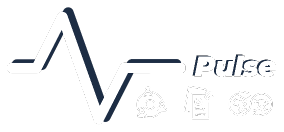Enabling Technology for Improving Maternal Healthcare in Myanmar
6 September 2023

Maternal mortality and morbidity rates remain a significant concern in many countries, including Myanmar. The Saving Mothers at Delivery project, funded by the Johnson & Johnson Foundation Scotland, in collaboration with the Royal College of Obstetricians and Gynaecologists (RCOG) and the World Federation of Societies of Anaesthesiologists (WFSA), aimed to make public health facilities in Myanmar safer for mothers during emergency delivery procedures.
The use of technology in the Saving Mothers at Delivery project had a significant impact on achieving the project’s goals and improving maternal healthcare outcomes.
A critical aspect of the Saving Mothers at Delivery project was the timely assessment and referral of patients to minimise complications during emergency obstetric procedures. Technology played a crucial role in streamlining this process. Digital tools, such as online learning platforms and videoconferencing were employed to facilitate remote consultations, improve communication between healthcare providers, and ensure prompt referrals. These technological interventions strengthened health worker capacity, leading to reduced delays in accessing emergency care and ultimately leading to better outcomes for mothers.
The project also recognised the importance of skilled obstetric teams in managing emergency complications effectively. Technology-enabled training programs were developed to enhance the knowledge and skills of healthcare professionals.
Online courses hosted on the THET PULSE e-learning platform provided comprehensive training in basic emergency obstetric care (BEmONC). The flexibility of online learning allowed health workers to access training materials at their convenience, overcoming barriers of time and geographical location.
The BEmONC training far outstripped its target reach, with 195 health workers successfully completing the online course. Additionally, 59 health workers from maternal emergency surgical teams were trained throughout the project, which is a 490% increase compared to the originally targeted 10 health specialists. The excellent reach of this training shows how the flexibility afforded through innovative digital solutions can enrich the Health Partnership model in hard-to-reach regions.
Meanwhile, to address the diverse needs of healthcare professionals, the project also incorporated multi-disciplinary training approaches. Advanced emergency obstetric care training and the WFSA SAFE OBS training were designed to cater to obstetricians, anaesthetists, and other obstetric emergency team members. Through a combination of virtual sessions, case-based discussions, and self-directed learning, participants gained specialised knowledge and skills required for managing complex obstetric emergencies.
The use of technology facilitated seamless knowledge transfer and collaboration between international experts and local healthcare professionals while the digital transformation of remote learning also allowed health workers to access key training resources on demand. Improved offline capabilities also removed any barriers of poor internet access for accessing digital resources. Many of the learners lacked reliable internet connectivity, making online learning platforms inaccessible. Offline e-learning allowed health workers to access educational content without the need for a continuous internet connection whilst also allowing the flexibility to learn at their own pace and convenience, without being constrained by travel costs, real-time connectivity, or fixed schedules.
The project engaged health workers in hard-to-reach areas with limited or no access to learning opportunities by clinical experts in their field of work through the delivery of in-person training sessions by clinical experts, comprising obstetricians and anaesthetists. These sessions utilized blended teaching techniques, including simulation training, case discussions, and faculty demonstrations, to enhance the recognition and management of maternal complications. The use of technology-enabled tools and resources supplemented the in-person training, ensuring continuous support and knowledge retention.
The Saving Mothers at Delivery project exemplifies how technology can positively impact maternal healthcare outcomes. Through the strategic integration of digital tools, online learning platforms, and in-person training tailored by THET’s large diaspora network to account for contextual sensitivities, the project successfully strengthened the competency of healthcare professionals, improved emergency obstetric care, and ultimately contributed to reducing maternal mortality and morbidity in Myanmar.
The project’s achievements highlight the potential of technology-driven interventions to bridge gaps in healthcare delivery and provide equitable access to quality maternal care. By embracing technological advancements, we can continue to make strides in improving maternal health outcomes globally whilst bridging the digital divide.


1 Comment
Leave a comment
Your email address will not be published.